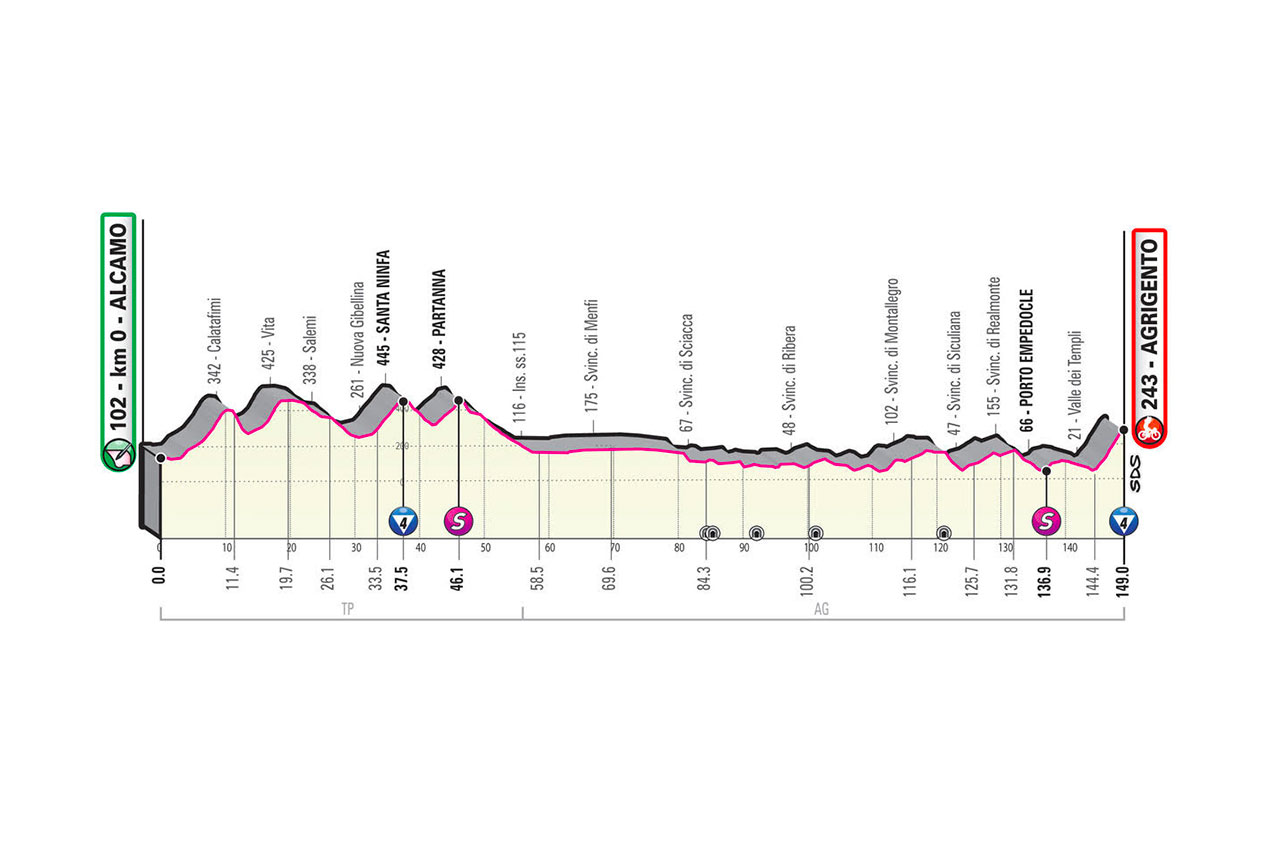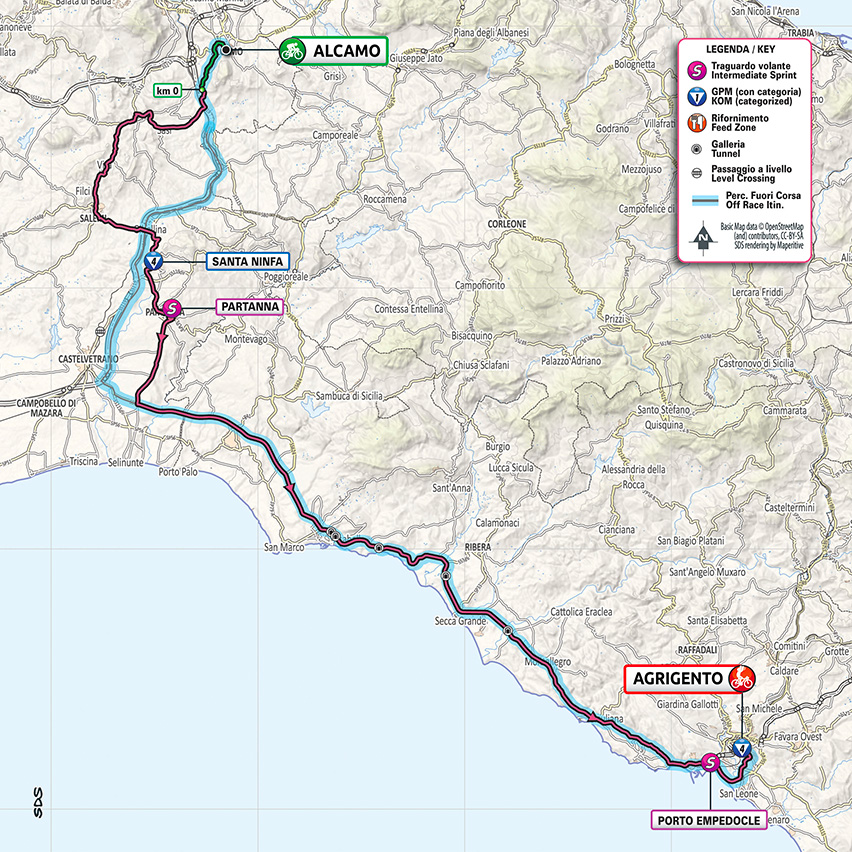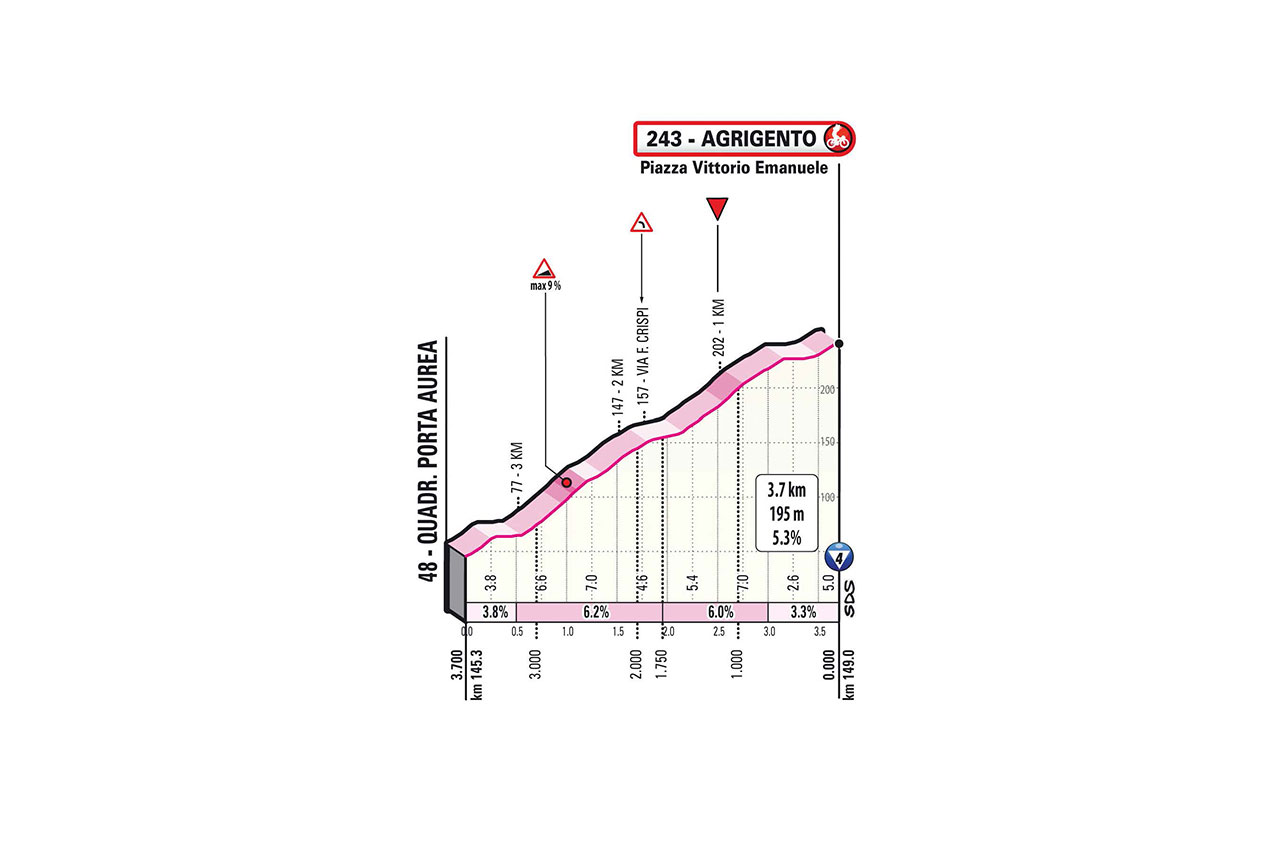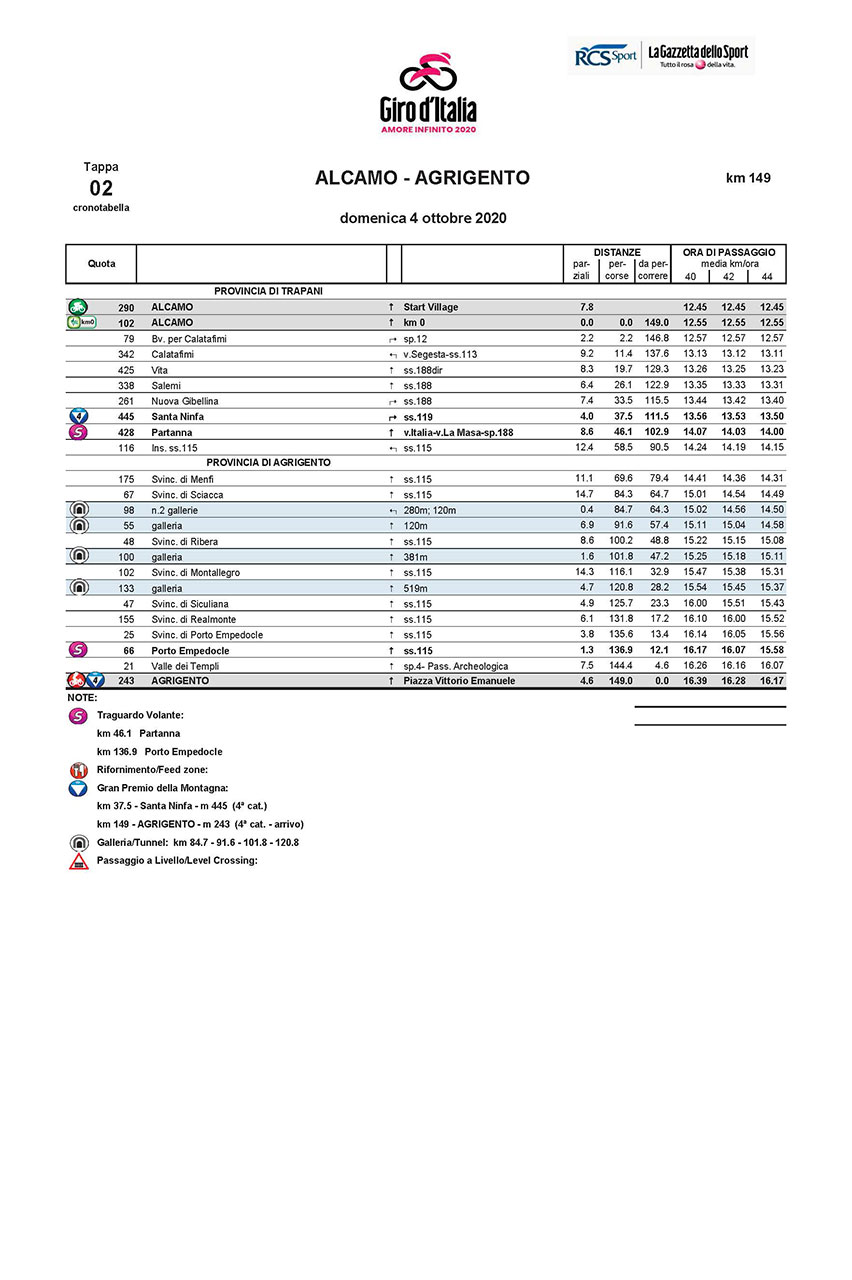profile
map
technical info
The Route
The first part of this short stage is quite intricate, wavy and curvy, cutting across the Trapani area and heading towards the Valle del Belice. The second part runs mostly on fast roads, with no urban areas along the route. After leaving Alcamo, the route undulates continuously through Calatafimi, Salemi, Santa Ninfa and Partanna, all the way to the trunk road that will lead the peloton through some mild undulations along the coast to just outside Agrigento, at the Valley of the Temples, 4 km before the finish.
Final kilometres
The final kilometres run entirely uphill at around 5%, with a short stretch peaking out around 9% 2.5 km before the finish. The road is wide and well-surfaced, with a series of short straight stretches and mild bends. The home straight (250 m) is on 8 m wide tarmac.
start / finish
final kilometres
itinerary timetable
tourist info
Host city:
Alcamo
Overview
Alcamois on the borderline with the Metropolitan City of Palermo at a distance of about 50 kilometres from Palermo and Trapani.
It is assumed that the city of Alcamo was born from the settlement of Longarico at the hands of the Berbers, who found this settlement semi-deserted.
The first document mentioning Alcamo is dating back to 1154, in a paper written by the Berber geographer Idrisi who was given this task by Roger II of Sicily, in order to get a collection of geographic maps.
There are discordances about the etymology of the toponym “Alcamo”: one of the hypothesis connects the present name to the Arab word al-qama, which would mean “muddy earth” or “rich soil”
food
- Handmade maccheroni
- Pasta with “finocchi and sarde” (wild small fennels and sardines)
- Sausages with “cavuliceddi” (a typical Alcamo vegetable)
- Dried filled tomatoes
- Cuddureddi (Christmas handmade fig sweets)
- Tetù (mixed and coloured biscuits)
- Sciù (cream sweets)
- Muffulette (fresh cooked roll bread with ricotta or other fillings
Points of interest
- Casa di Ciullo d’Alcamo
- Ex Loggia Comunale
- Palazzo Comunale
- Palazzo De Ballis
- Palazzo De Stefani
- Palazzo Di Gregorio
- Ciullo d’Alcamo house
- Former Municipal Loggia
- Town Hall
- Palazzo De Ballis
- Palazzo De Stefani
- Palazzo Di Gregorio
- Church of Santa Maria della Stella
- Church of San Tommaso
- Church of Santa Maria di Gesù
- Church of Sant’Oliva
- Castle of the Counts of Modica
- Ventimiglia Castle
- Calatubo Castle
Agrigento
Overview
The ancient Greek city of Akragas, later called by the Latins Agrigentum, was founded around 580a.C by a colony of Geloi-Rodiensi, led by the ecists Aristoneo and Pistillo in the plain where today we find the remains of ancient temples and known worldwide as “The Valley of the Temples” (included by UNESCO in the list of World Heritage Sites). Akragas was limited to the west by the Hypsas river (Dragon) and to the south by the Akragas river (San Biagio). The acropolis was built in the place now occupied by modern Agrigento. From the beginning the city had its own emporium on the sea. Today, in the year 2020, celebrations are underway in Agrigento for the 2600 years of history since the foundation of the city.
points of interest
The Cathedral of San Gerlando stands on the Girgenti hill. It was the sign and symbol of the resurgence of the Christian event in the Agrigento area. The mute bells resumed for three centuries under the Muslims.
Since its original construction, the current Cathedral of Agrigento has very little preserved, redone as it has been on several occasions. Only the interior of the basilica retains traces of the Norman layout with its Latin cross plan and three naves, but its structure, both external and partially internal, belongs to various reconstructions over the centuries. The sacristy houses magnificent eighteenth-century wardrobes which contained beautiful sacred vestments currently exhibited in the diocesan museum. Among the paintings in the cathedral the most famous is the “Madonna and Child”, attributed to Guido Reni (1575-1642). It represents the Madonna in the act of supporting the abandoned child in a deep sleep.
Top video

Highlights Stage 2

Last Km
Interviews
Photo gallery



















































































































